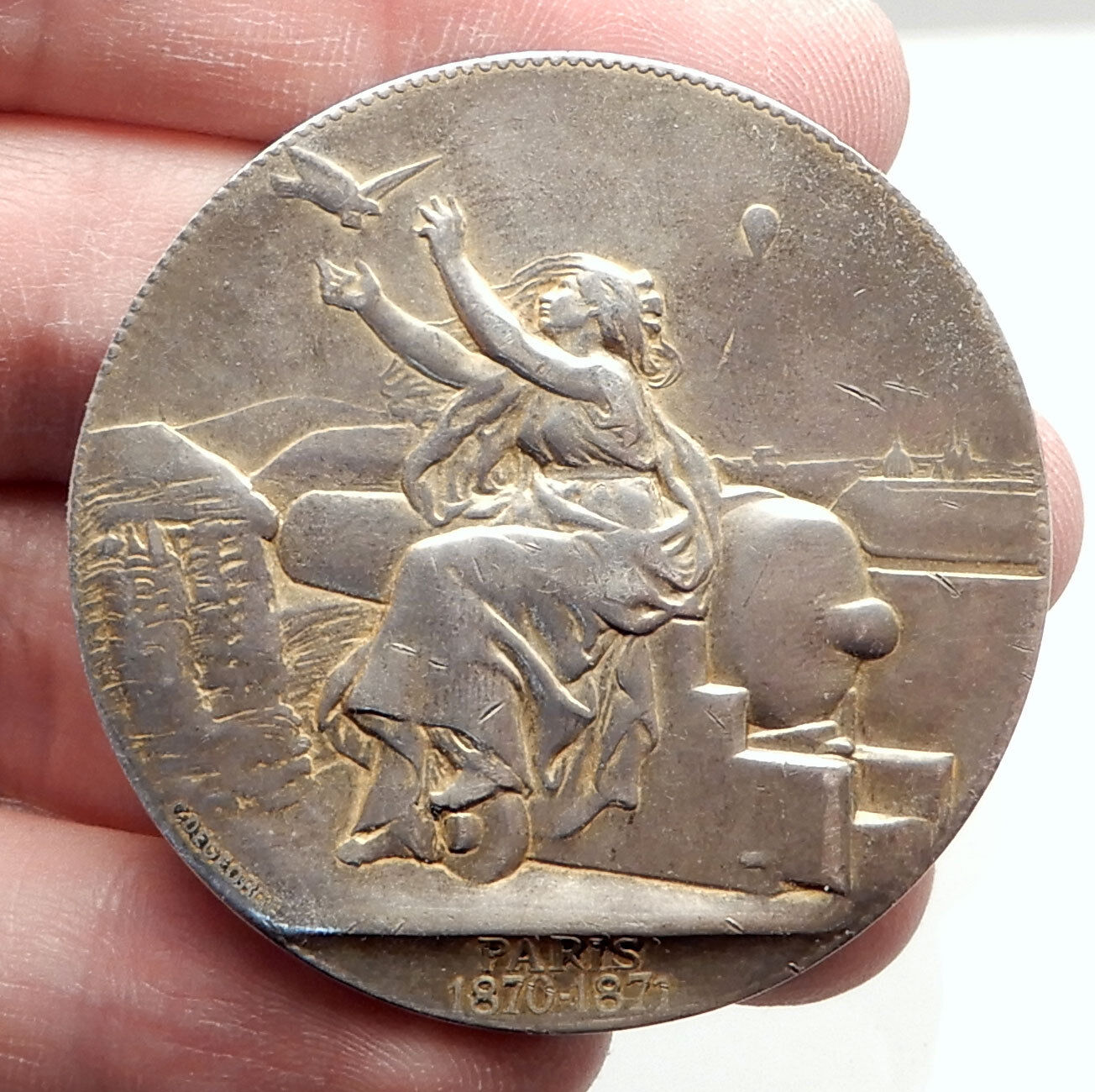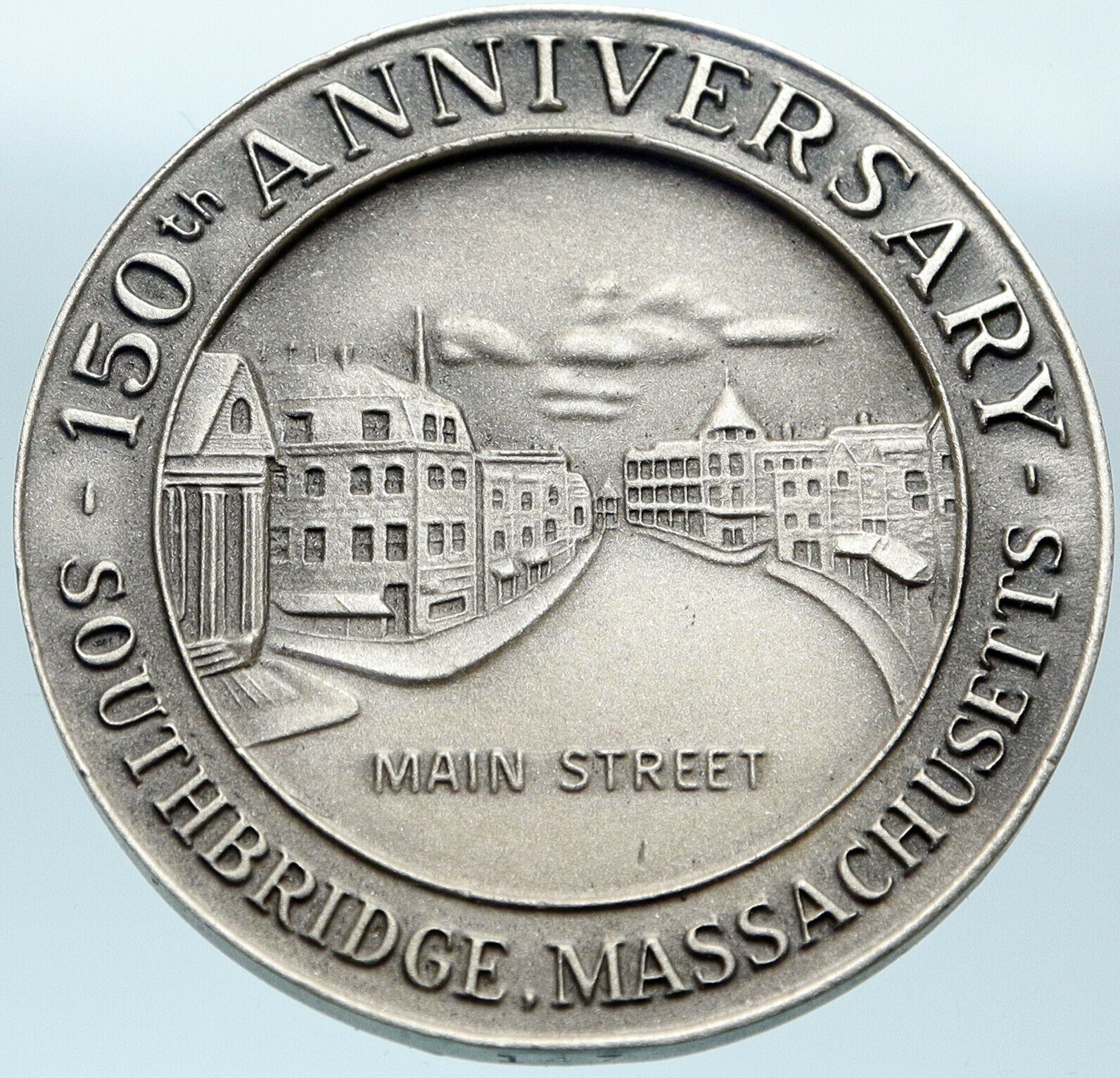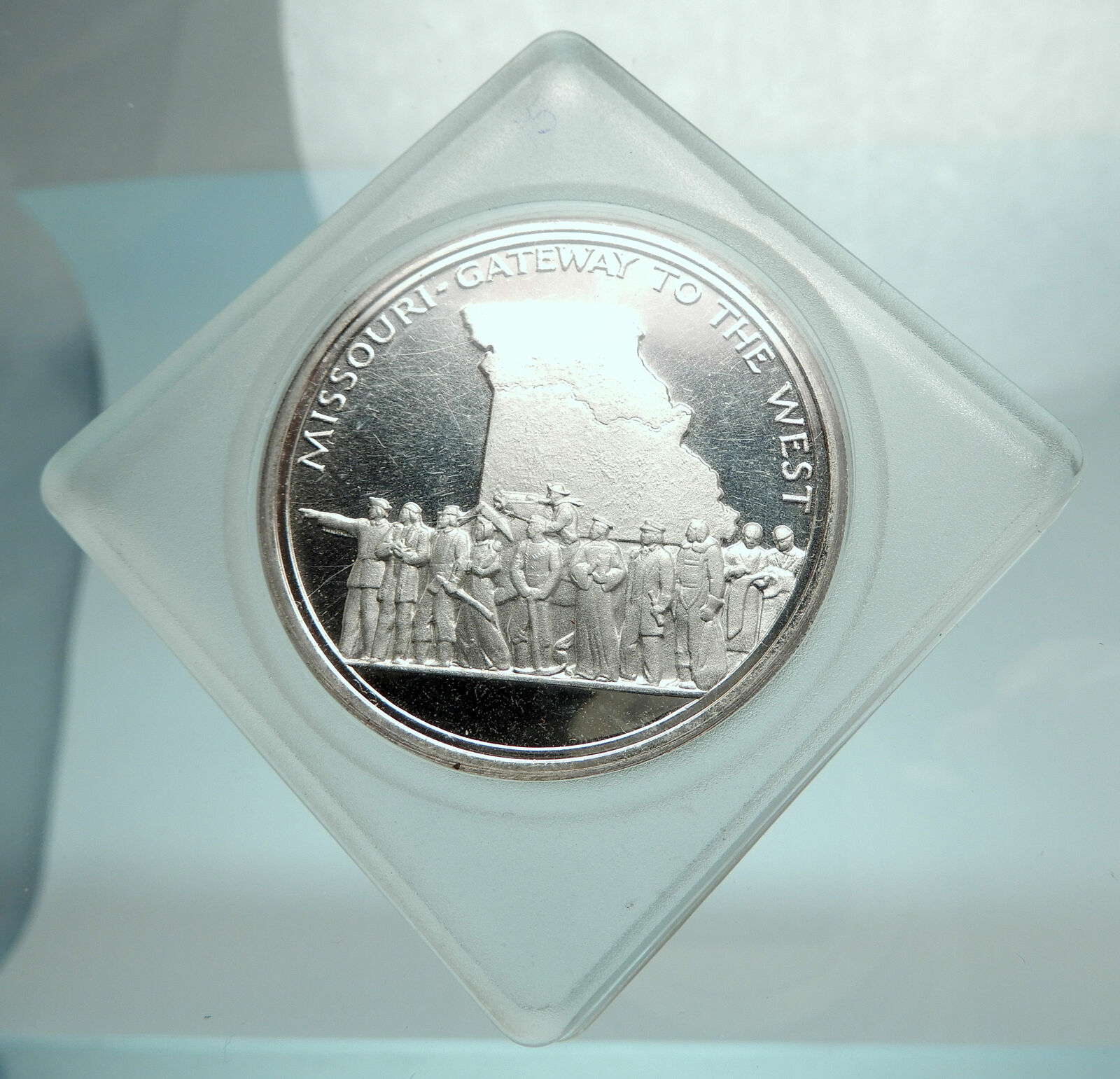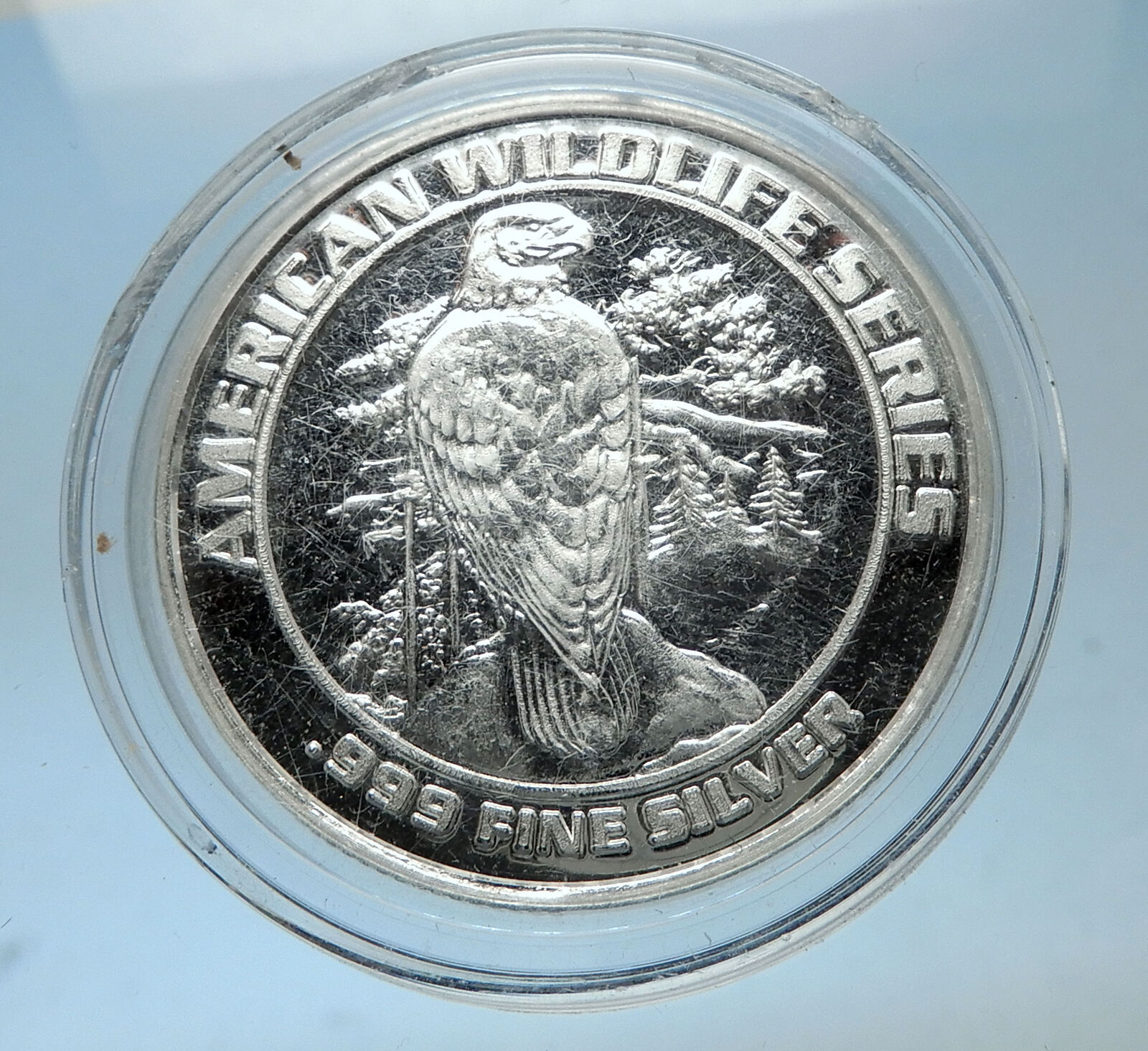|
England Middlesex / London. Conder Token
George IV as Prince of Wales: 1762- 1820
1795 Copper
Half Penny Conder Token 28mm (9.00 grams)
DH# 963
GEORGE PRINCE OF WALES, Three quarter length bust to right with the line of
forehead to c.
HALFPENNY ICH DIEN 1 7 9 5, The Prince’s crest and motto.
You are bidding on the exact item pictured, provided with a Certificate of Authenticity and Lifetime Guarantee of Authenticity.
 Prince of Wales was a title held by native Welsh princes before the 12th century; the term replaced the use of the word king. One of the last Welsh princes, Llywelyn ap Gruffudd, was killed at the Battle of Orewin Bridge in 1282. Edward I, King of England, invested his son Edward (born in Caernarfon Castle in 1284) as the first English Prince of Wales in 1301. Prince of Wales was a title held by native Welsh princes before the 12th century; the term replaced the use of the word king. One of the last Welsh princes, Llywelyn ap Gruffudd, was killed at the Battle of Orewin Bridge in 1282. Edward I, King of England, invested his son Edward (born in Caernarfon Castle in 1284) as the first English Prince of Wales in 1301.
Since the 14th century, the title has been a dynastic title granted by the king or queen to the heir apparent to the English or British monarch, but the failure to be granted the title does not affect the rights to royal succession. The title is granted to the heir apparent as a personal honour or dignity, and is not heritable, merging with the Crown on accession to the throne. Since 1301, the title Earl of Chester has been given in conjunction with that of Prince of Wales. The Prince of Wales usually has other titles and honours; if the eldest son of the monarch, typically this means being Duke of Cornwall, which unlike being Prince of Wales inherently includes lands and constitutional and operational responsibilities.
The current and longest-serving Prince of Wales is Prince Charles, the eldest son of Elizabeth II, who is Queen of the United Kingdom and 15 other independent Commonwealth realms as well as Head of the 53-member Commonwealth of Nations. The wife of the Prince of Wales is entitled to the title Princess of Wales. Prince Charles’s first wife, Diana, used that title, but his second wife, Camilla, uses only the title Duchess of Cornwall (or of Rothesay when in Scotland) because the other title has become so popularly associated with Diana.
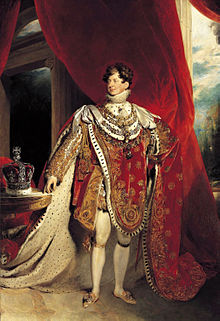 George IV (George Augustus Frederick; 12 August 1762 – 26 June 1830) was King of the United Kingdom of Great Britain and Ireland and King of Hanover from the death of his father, King George III, on 29 January 1820 until his own death ten years later. From 1811 until his accession, he served as regent during his father’s final mental illness. George IV (George Augustus Frederick; 12 August 1762 – 26 June 1830) was King of the United Kingdom of Great Britain and Ireland and King of Hanover from the death of his father, King George III, on 29 January 1820 until his own death ten years later. From 1811 until his accession, he served as regent during his father’s final mental illness.
George IV was the eldest child of King George III and Queen Charlotte. He led an extravagant lifestyle that contributed to the fashions of the Regency era. He was a patron of new forms of leisure, style and taste. He commissioned John Nash to build the Royal Pavilion in Brighton and remodel Buckingham Palace, and commissioned Sir Jeffry Wyatville to rebuild Windsor Castle. George’s charm and culture earned him the title “the first gentleman of England”, but his dissolute way of life and poor relationships with his parents and his wife, Caroline of Brunswick, earned him the contempt of the people and dimmed the prestige of the monarchy. He excluded Caroline from his coronation and asked the government to introduce the unpopular Pains and Penalties Bill in an unsuccessful attempt to divorce her.
Despite presiding over the British Empire’s emergence as a global hegemon, George IV’s rule was tarnished by scandal and financial extravagance. His ministers found his behaviour selfish, unreliable and irresponsible, and he was strongly influenced by favourites. Taxpayers were angry at his wasteful spending during the Napoleonic Wars. During most of George’s regency and reign, Lord Liverpool controlled the government as Prime Minister of the United Kingdom. Liverpool’s government presided over Britain’s ultimate victory over Napoleon and negotiated a peace settlement with the French. After Liverpool’s retirement, George IV was forced to accept Catholic emancipation despite opposing it. His only legitimate child, Princess Charlotte, predeceased him in 1817; on his death, he was succeeded by his younger brother, King William IV.
 Middlesex (abbreviation: Middx) is an historic county in southeast England. It is now entirely within the wider urbanised area of London. Its area is now also mostly within the ceremonial county of Greater London, with small sections in other neighbouring ceremonial counties. It was established in the Anglo-Saxon system from the territory of the Middle Saxons, and existed as an official unit until 1965. The historic county includes land stretching north of the River Thames from 3 miles (5 km) east to 17 miles (27 km) west of the City of London with the rivers Colne and Lea and a ridge of hills as the other boundaries. The largely low-lying county, dominated by clay in its north and alluvium on gravel in its south, was the second smallest county by area in 1831. Middlesex (abbreviation: Middx) is an historic county in southeast England. It is now entirely within the wider urbanised area of London. Its area is now also mostly within the ceremonial county of Greater London, with small sections in other neighbouring ceremonial counties. It was established in the Anglo-Saxon system from the territory of the Middle Saxons, and existed as an official unit until 1965. The historic county includes land stretching north of the River Thames from 3 miles (5 km) east to 17 miles (27 km) west of the City of London with the rivers Colne and Lea and a ridge of hills as the other boundaries. The largely low-lying county, dominated by clay in its north and alluvium on gravel in its south, was the second smallest county by area in 1831.
The City of London was a county in its own right from the 12th century and was able to exert political control over Middlesex. Westminster Abbey dominated most of the early financial, judicial and ecclesiastical aspects of the county. As London grew into Middlesex, the Corporation of London resisted attempts to expand the city boundaries into the county, which posed problems for the administration of local government and justice. In the 18th and 19th centuries the population density was especially high in the southeast of the county, including the East End and West End of London. From 1855 the southeast was administered, with sections of Kent and Surrey, as part of the area of the Metropolitan Board of Works. When county councils were introduced in England in 1889 about 20% of the area of Middlesex, along with a third of its population, was transferred to the new County of London and the remainder became an administrative county governed by the Middlesex County Council[6] that met regularly at the Middlesex Guildhall in Westminster, in the County of London. The City of London, and Middlesex, became separate counties for other purposes and Middlesex regained the right to appoint its own sheriff, lost in 1199.
 In the interwar years suburban London expanded further, with improvement and expansion of public transport, and the setting up of new industries. After the Second World War, the population of the County of London and inner Middlesex was in steady decline, with high population growth continuing in the outer parts. After a Royal Commission on Local Government in Greater London, almost all of the original area was incorporated into an enlarged Greater London in 1965, with the rest transferred to neighbouring counties. Since 1965 various areas called Middlesex have been used for cricket and other sports. Middlesex was the former postal county of 25 post towns. In the interwar years suburban London expanded further, with improvement and expansion of public transport, and the setting up of new industries. After the Second World War, the population of the County of London and inner Middlesex was in steady decline, with high population growth continuing in the outer parts. After a Royal Commission on Local Government in Greater London, almost all of the original area was incorporated into an enlarged Greater London in 1965, with the rest transferred to neighbouring counties. Since 1965 various areas called Middlesex have been used for cricket and other sports. Middlesex was the former postal county of 25 post towns.
Conder Tokens, also known as 18th Century Provincial Tokens, are a form of privately minted token coinage struck and used during the latter part of the 18th Century and the early part of the 19th Century in England, Anglesey and Wales, Scotland, and Ireland.
The driving force behind the need for token coinage was the shortage of small denomination coins for everyday transactions. However, the demand was fueled by other factors such as the Industrial Revolution, population growth, and the preponderance of counterfeit circulating coins. Because the government made little effort to ameliorate this shortage, private business owners and merchants took matters into their own hands, and the first tokens of this type were issued in 1787 to pay workers at the Parys Mine Company. By 1795, millions of tokens of a few thousand varying designs had been struck and were in common use throughout Great Britain.
Collecting Conder tokens has been popular since shortly after they were first manufactured, resulting in the availability today of many highly preserved examples for collectors. The demarcation of what is or is not considered a Conder token is somewhat unclear; however, most collectors consider Conder tokens to include those indexed originally by James Conder or later by Dalton & Hamer.
|





 Prince of Wales was a title held by native Welsh princes before the 12th century; the term replaced the use of the word king. One of the last Welsh princes, Llywelyn ap Gruffudd, was killed at the Battle of Orewin Bridge in 1282. Edward I, King of England, invested his son Edward (born in Caernarfon Castle in 1284) as the first English Prince of Wales in 1301.
Prince of Wales was a title held by native Welsh princes before the 12th century; the term replaced the use of the word king. One of the last Welsh princes, Llywelyn ap Gruffudd, was killed at the Battle of Orewin Bridge in 1282. Edward I, King of England, invested his son Edward (born in Caernarfon Castle in 1284) as the first English Prince of Wales in 1301.  George IV (George Augustus Frederick; 12 August 1762 – 26 June 1830) was King of the United Kingdom of Great Britain and Ireland and King of Hanover from the death of his father, King George III, on 29 January 1820 until his own death ten years later. From 1811 until his accession, he served as regent during his father’s final mental illness.
George IV (George Augustus Frederick; 12 August 1762 – 26 June 1830) was King of the United Kingdom of Great Britain and Ireland and King of Hanover from the death of his father, King George III, on 29 January 1820 until his own death ten years later. From 1811 until his accession, he served as regent during his father’s final mental illness.  Middlesex (abbreviation: Middx) is an historic county in southeast England. It is now entirely within the wider urbanised area of London. Its area is now also mostly within the ceremonial county of Greater London, with small sections in other neighbouring ceremonial counties. It was established in the Anglo-Saxon system from the territory of the Middle Saxons, and existed as an official unit until 1965. The historic county includes land stretching north of the River Thames from 3 miles (5 km) east to 17 miles (27 km) west of the City of London with the rivers Colne and Lea and a ridge of hills as the other boundaries. The largely low-lying county, dominated by clay in its north and alluvium on gravel in its south, was the second smallest county by area in 1831.
Middlesex (abbreviation: Middx) is an historic county in southeast England. It is now entirely within the wider urbanised area of London. Its area is now also mostly within the ceremonial county of Greater London, with small sections in other neighbouring ceremonial counties. It was established in the Anglo-Saxon system from the territory of the Middle Saxons, and existed as an official unit until 1965. The historic county includes land stretching north of the River Thames from 3 miles (5 km) east to 17 miles (27 km) west of the City of London with the rivers Colne and Lea and a ridge of hills as the other boundaries. The largely low-lying county, dominated by clay in its north and alluvium on gravel in its south, was the second smallest county by area in 1831.  In the interwar years suburban London expanded further, with improvement and expansion of public transport, and the setting up of new industries. After the Second World War, the population of the County of London and inner Middlesex was in steady decline, with high population growth continuing in the outer parts. After a Royal Commission on Local Government in Greater London, almost all of the original area was incorporated into an enlarged Greater London in 1965, with the rest transferred to neighbouring counties. Since 1965 various areas called Middlesex have been used for cricket and other sports. Middlesex was the former postal county of 25 post towns.
In the interwar years suburban London expanded further, with improvement and expansion of public transport, and the setting up of new industries. After the Second World War, the population of the County of London and inner Middlesex was in steady decline, with high population growth continuing in the outer parts. After a Royal Commission on Local Government in Greater London, almost all of the original area was incorporated into an enlarged Greater London in 1965, with the rest transferred to neighbouring counties. Since 1965 various areas called Middlesex have been used for cricket and other sports. Middlesex was the former postal county of 25 post towns. 

